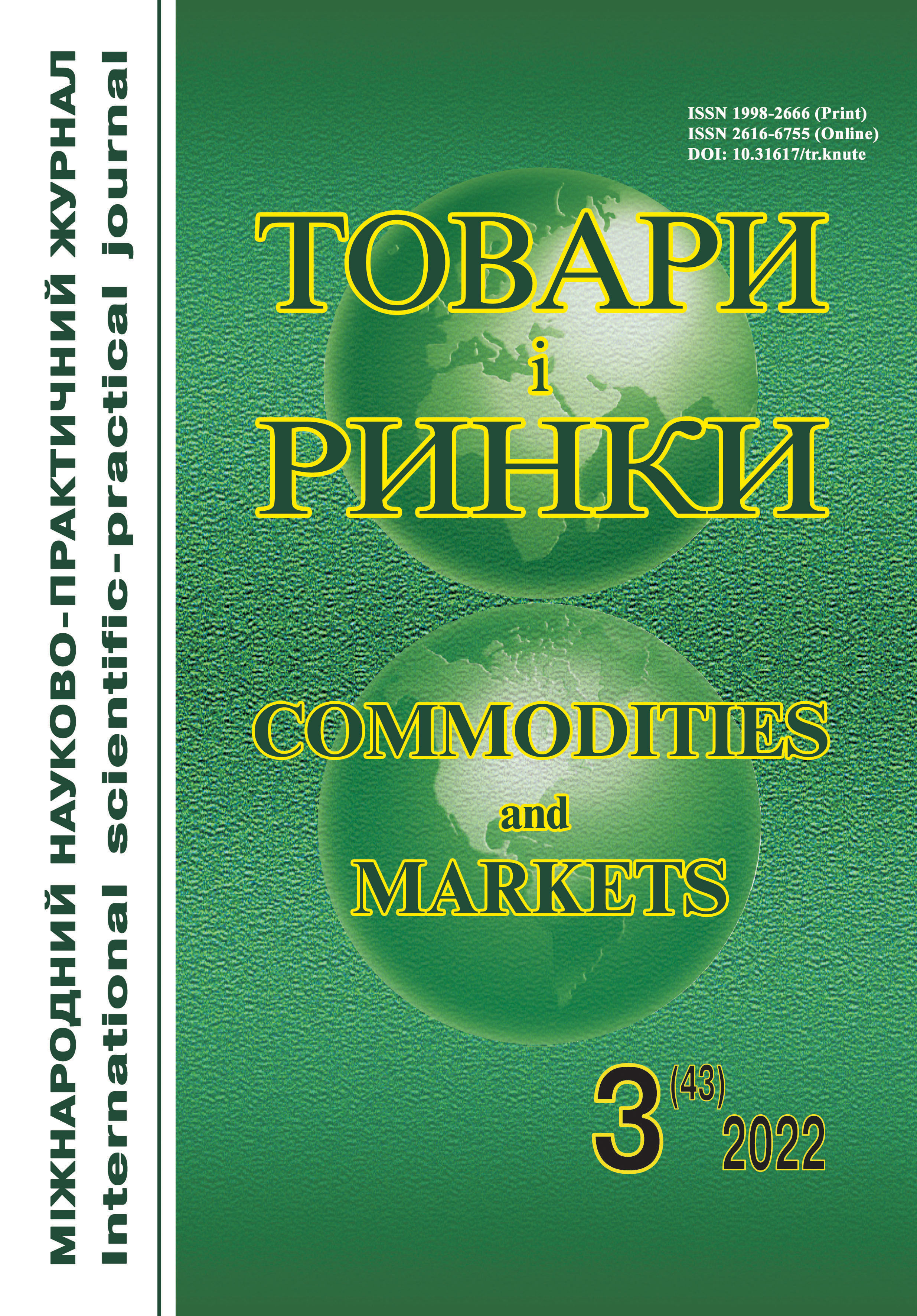Morphometric characteristics of historical cold weapons
DOI:
https://doi.org/10.31617/2.2022(43)06Keywords:
cold weapon, saber, automated recognition technique, Russell – Rao algorithm, morphometrical characteristics, commodity evaluationAbstract
Introduction. Historical weapons are a value popularized by museum funds, private collectors, and exhibitions. Determining its value, historical and cultural value and authenticity are the most important tasks that experts face, but for its implementation, it is necessary to have a unified base of features and affinities of samples of various types of cold weapons.
Problem. Professional appraisers and forensic experts need objective, unified and computerized methods of recognizing cold weapons to perform the tasks of commodity evaluation. This makes it possible to use available information sources and specialized databases to identify and assess the affinity of examination objects to well-described and comprehensively researched samples. The development of specialized software for the automated storage and processing of information about cold weapons, as well as the introduction of intelligent databases with the ability to search for related items in global content, is gaining relevance.
The aim of the article is to study the possibility of applying the technique of automated recognition and determination of the affinity of samples of cold weapons-sabers according to the Russell – Rao algorithm for commodity examination.
Methods. The method of conducting the examination is the automated recognition of the kinship of sabers based on morphometric characteristics based on the Russell – Rao algorithm.
Results. The affinities of sabers and their differences from weapons of other kinds are determined. For the study, 10 samples of cold weapons were selected, the morphometric parameters of which were measured according to the methods described and agreed upon by experts. A list of derived morphometric characteristics has been developed that allows the comparison of samples based on visually observed features.
According to the conducted research, affinities between the studied samples were established and the point of congruence was determined.
Conclusions. An optimized classification model was built for studying the species specificity of cold weapons based on morphometric characteristics.
Experimentally, according to the Russell – Rao algorithm, the affinity indices between the studied samples and the reference sample were determined.
The proposed action algorithm allows you to carry out cost forecasting operations based on the creation of optimized databases of source information and conducting traditional comparative studies for commodity expertise.
References
Indutnyj, V. V., & Pohodjashha, O. B. (2021). Ekspertyza pam’jatok kul’tury [Examination of cultural monuments]. Kyi’v: Litera LTD [in Ukrainian].
Indutnyj, V. V., Pohodjashha, O. B., & Merezhko, N. V. (2018). Indeks sporidnenosti Rassela – Rao u stylistychnij ekspertyzi pam’jatok kul’tury [Russell-Rao kinship index in stylistic examination of cultural monuments]. Zbirnyk naukovyh prac’ – Collection of scientific works. Issue 3. Kyi’v: Naukovyj visnyk Nacional’nogo muzeju istorii’ Ukrai’ny [in Ukrainian].
Slovnyk ukrai’ns’koi’ movy [Dictionary of the Ukrainian language]. http://www.inmo.org.ua/sum.html?wrd=%D0%A8%D0%B0%D0%B1%D0%BB%D1%8F [in Ukrainian].
Indutnyj, V. V. (2014). Rynky kul’turnyh cinnostej: porivnjal’nyj analiz [Markets of cultural values: a comparative analysis]. Visnyk Nacional’noi’ akademii’ kerivnyh kadriv kul’tury i mystectv – Bulletin of the National Academy of Managers of Culture and Arts, 1, 19-27. http://nbuv.gov.ua/UJRN/vdakkkm_2014_1_6 [in Ukrainian].
Vovk Yu. (2020). Predicting the cost of antique cold weapons by a comparative method. Mizhnarodnyj naukovo-praktychnyj zhurnal "Tovary i rynky" – International scientific and practical journal "Commodities and Markets", 2(34), 46-57 [in English].
Indutnyj, V. V., Merezhko, N. V., & Toi’chkin, D. V. (2017). Tovaroznavcha harakterystyka antykvarnoi’ holodnoi’ zbroi’ na rynku Ukrai’ny. Istorija davn’oi’ zbroi’. Doslidzhennja 2016 [Merchandising characteristics of antique cold weapons on the market of Ukraine. History of ancient weapons. 2016 study]. Zbirnyk naukovyh prac’ – Collection of scientific works. Kyi’v: In-t istorii’ Ukrai’ny NANU. (pp. 323-337) [in Ukrainian].
Akademichnyj tlumachnyj slovnyk [Academic explanatory dictionary]. http://sum.in.ua/s/shablja#:~:text=%D0%A8%D0%90%CC%81%D0%91%D0%9B%D0%AF%2C%20%D1%96,%D1%81%D1%82%D0%B0%D0%BB%D0%B5%D0%B2%D0%B8%D0%BC%20%D0%BB%D0%B5%D0%B7%D0%BE%D0%BC%20%D1%96%20%D0%B3%D0%BE%D1%81%D1%82%D1%80%D0%B8%D0%BC%20%D0%BA%D1%96%D0%BD%D1%86%D0%B5%D0%BC [in Ukrainian].
Slovnyk inshomovnyh sliv [Dictionary of foreign words]. https://www.jnsm.com.ua/cgi-bin/u/book/sis.pl?Qry=%D8%E0%E1%EB%FF [in Ukrainian].
Vikipedija. Shablja [Wikipedia. Saber]. https://uk.wikipedia.org/wiki/%D0%A8%D0%B0%D0%B1%D0%BB%D1%8F [in Ukrainian].
Toi’chkin, D. (2013). Klynkova zbroja kozac’koi’ starshyny XVI – pershoi’ polovyny XIX st: problemy atrybucii’ ta klasyfikacii’ [The bladed weapon of the Cossack chieftain of the 16th – the first half of the 19th centuries: problems of attribution and classification]. Kyi’v: Instytut istorii’ Ukrai’ny NANU [in Ukrainian].
Ukrai’ns’ka vijs’kova istorija. Kozac’ki shabli XVII stolittja [Ukrainian military history. Cossack sabers of the 17th century]. https://www.ucrainarma.org/fotorekonstrukcija/kozacki-shabli-17-stolittia.html [in Ukrainian].
Shablja zrazka 1889 roku + temljak [Saber model of 1889 + sword-knot]. https://violity.com/104156261-shablya-zrazka-1889-roku-temlyak/?utm_source=search_result&utm_medium=shablya-zrazka-1889-roku-temlyak&utm_campaign=16100uah [in Ukrainian].



